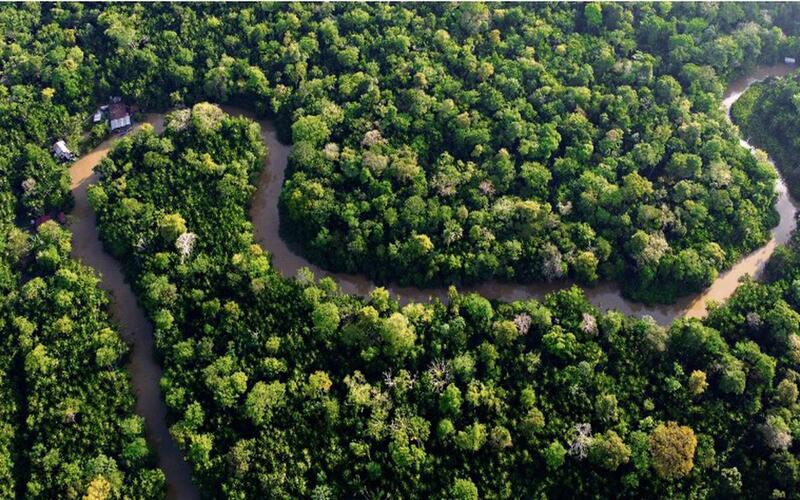Puma's Path to Climate Neutrality: A 2030 Roadmap

Road Map to Puma's 2030 Vision, Climate Neutrality
Recently, German-based sportswear giant Puma made a promise by becoming climate-neutral by 2030. During this, it published its integrated action framework concerning the reduction of ecological impacts throughout its value chain while encouraging even more sustainable activities. It remains one of the very confident steps toward long-term vision by the brand for the change in the better sustainable future and contributing towards the fight against the problems that are causing it.
The one branded as the 2030 Puma Roadmap has set its sights to present a solid stance in terms of carbon neutralization. It is done by carbon emission reductions, energy efficiency, and renewable resources. Other concentration for Puma lies on product design, manufacturing processes, and logistics.
Three primary aspects of the 2030 Roadmap
1. Carbon Emission Reduction
Most of Puma's strategy would be through a reduction in carbon footprint. The carbon footprint forms the largest part of its environmental impact. The company has made a commitment to reduce its carbon footprint by 50% by 2030, relative to levels achieved in 2017. This could be done by using energy-efficient technological frameworks in its manufacturing plants, using renewable sources of energy, and improving transportation processes.
The company is already integrating some forms of renewable energy in its operations. By 2025, Puma seeks to have all the facilities owned and operated on renewable energy. In addition, Puma will engage with suppliers and will encourage them to also adopt renewable energy at their facilities to reduce carbon emissions in the value chain.
2. Sustainable Product Design
Puma says the future should be carbon-neutral. Hence, much talk of climate neutrality makes an entry in the design of a product and also at the point of materials selection. The company looks for 90% of the products to design with this sustainability in mind. Among them, some other more sustainable materials will have organic cotton, recycled polyester, and plant-based alternatives.
Additionally, Puma is targeting to make its products last longer, so they are consumed for longer periods, hence less waste is incurred. The company seeks to use the minimum virgin resources, increase the recovery and reuse of aspects in systems so that consumers support the circular economy.
3. Climate-Friendly Logistics and Supply Chain
With this, the company is also making its logistics and supply chain climate-friendly. To this effect, Puma has optimized its transport network with the help of a better mode of energy use and reducing the total distance of transportation. In addition, the firm has reduced packaging waste and used more sustainable materials in packaging.
This means the suppliers will be put under the same standards in terms of sustainability. Puma will lead low-carbon technologies and processes for its supply chain's carbon footprint.
4. Reporting and Transparency
Puma understands that transparency is very important in their actions toward being climate neutral. Puma would periodically release reports regarding its work, and how clearly updates would be done to report on the reductions made to its emissions. Puma commits to accountancy as well as to performance monitoring towards the targets set for 2030.
It will work with independent third parties so that its sustainability claims are verified. This will add more assurance to customers and other stakeholders regarding the fact that the company is making some serious steps toward becoming climate-neutral.
Challenges on the Road to Climate Neutrality
This will be quite a tough call since, up to 2030, it is not counted for carbon neutrality, and one of the largest fears is that the company would rely on the supply chain itself as it includes thousands of various suppliers operating in multiple geographies. This would actually be pretty challenging and resource-intensive when trying to co-ordinate sustainability practices among this large set of suppliers.
These industries become popular for producing massive environmental impact, mainly during production and transportation. So, emission reduction in such sectors requires huge amounts of investment in green technology and innovation, so Puma needs to support it along the whole value chain.
Despite all these challenges, Puma is on its track to the objectives. The company believes that the strategy will help the environment along with the business in the long run. Sustainable practices will meet the increasing demand of consumers for eco-friendly products, hence making it more powerful in the market.
Future of the Corporation: Puma's Commitment to Sustainability
The 2030 roadmap from Puma represents a huge leap in the effort to reduce the environmental footprint of the company toward contributing to global sustainability goals. This approach toward climate neutrality definitely reflects commitment toward tackling the crisis of climate and should become an example for the larger industry.
Puma is one of the largest sportswear brands globally and, consequently, has an opportunity to have an influence over enormous portions of the market while also being in a position to be a trendsetter with respect to more sustainable practices. The 2030 roadmap for Puma represents an unambiguous pathway to success relative to those goals the company has established relating to climate neutrality as well as ensuring a far more sustainable future for the planet as well as customers.
Puma is transforming itself into one of the most ambitious yet achievable issuers that will become climate-neutral by 2030. This is done by cutting carbon emissions through reduction in emissions, design sustainable products, optimization of logistics, and ensuring that reporting is transparent. This is an example of a commitment that such a brand undergoes within the initiatives that are found within the industry. Thus, in this way, big firms, regardless of their size and scale of operations, minimize their environmental footprints while focusing on the achievement of sustainability as a precious value.
By the year 2030, Puma will check the progress and sharpen the strategies to ensure leadership on the international scene of sustainability.
Source: Puma Group
What's Your Reaction?

















